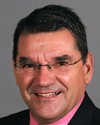Thank you, Mr. Chairman.
Thank you to the members of this committee for inviting me to speak today on the issue of noise.
Noise is not just a health concern; it's also a quality of life issue. If not properly handled with the right noise reduction strategies, this issue has the potential to place undue stress on the well-being of those in the affected areas. It places strain on basic day-to-day activities, going to bed and waking up, eating meals, etc.
This is why Transport Canada has put in place regulations, policies, and procedures that have worked for the majority of Canadians for more than 40 years.
Since 1980, our position that aircraft noise issues in urban areas are best handled at the local level has served the department and Canadians well. After all, local representatives have intimate knowledge of regional matters, a capacity that we, at the headquarters, do not and cannot possess. It is a complex issue with many variables.
Transport Canada provides oversight of this system, making sure that policies and procedures work for the community, for the industry, and for travellers. We do this in conjunction with numerous third parties, including Health Canada, which provides us with advice on the health effects of aircraft noise.
We balance these concerns with a host of other considerations that collectively make this a complex issue. Citizens want shorter flights. They want to spend less time in the air. Pilots want easier access to airports and fewer route limitations. Airlines want to reduce fuel consumption and greenhouse gas emissions, and developing countries need time to bring national fleets up to the aircraft noise standards of the international community.
We have to consider all these aspects while also noting that the attitudes of residents exposed to aircraft noise are subjective and varied. We also consider not just the loudness of the aircraft but also the frequency, duration, pitch, tone, and so on--all factors that contribute to a strain on the community's well-being.
Transport Canada and other responsible third parties have three principal noise reduction strategies: reducing the noise at the source, managing land use in the vicinity of airports, and managing operational procedures.
Foremost, during the last forty years, much of the international civil aviation community's efforts to reduce aircraft noise has been to target the source, to make quieter engines and airplanes. During this time, noise standards have become more and more stringent. Today, Transport Canada's noise standards and all Canadian aircraft are fully compliant with rigorous international standards.
In January 1996, Transport Canada enacted a landmark regulation to phase out older, noisier aircraft in conjunction with the resolutions of International Civil Aviation Organization or ICAO. For the industry, the cost of this move was high. However, it was necessary. We had to curb the increase in noise levels as air traffic grew in the vicinity of airports. Canada completed this phase out in April 2002, making our skies much quieter.
Since that time, ICAO has introduced, and even strengthened, noise standards for aircraft certified after 2006. Before a new aircraft design is approved in Canada, we ensure that it meets these standards. If it doesn't, it will not be approved. We enforce these standards through our aircraft certification process. That system works, and today our skies are more quiet than they have ever been.
Part of the credit needs to go to our industry in Canada—for example, Bombardier CSeries aircraft is expected to be four times more quiet than any other aircraft in its category. We also have to highlight the makers of the CSeries engine, Pratt & Whitney Canada, another Canadian company.
This evolution in technology will not only improve the quality of life of those in neighbourhoods surrounding airports, it also allows aircraft to fly directly to airports without increasing the noise level, which also means reduced fuel consumption and less GHG emissions.
Next, we have to properly manage land use in the vicinity of airports. No matter how successful the industry is in reducing engine noise, a degree of noise will always be present. Until we get to zero noise emission aircraft, we will have to work with aviation planners and those responsible for the development of lands adjacent to airports to implement smart zoning practices.
Transport Canada provides airports with a measurement model of the actual and forecasted aircraft noise for that region. Aircraft noise metrics and predicting resident reaction is the subject of ongoing discussions internationally.
We have to factor the subjective rate reactions of the human ear to specific noise stimulus. This involves not only measuring how loud the noise may be, but also factoring other irritants that contribute to the strain on well-being, such as frequency, duration, time of occurrence, tone, and many other factors.
Transport Canada uses a noise exposure forecast system that calculates the NEF levels in the vicinity of airports by measuring all of these variables. NEF levels are based on forecasted aircraft movements at a particular airport. This metric allows us to predict the community's response to aircraft noise. If the NEF level is greater than 35, complaints are likely to be very high. Anything above 25 is likely to produce some level of annoyance; levels lower than that, less likely, obviously.
We understand the implications of these figures, and, as such, before these figures are released publicly, they go through a detailed review.
Land planners can use NEF levels to ensure that land use in the vicinity of an airport is compatible with that airport. Through the system, municipalities and local governments receive a basis for zoning, and residents receive details of what may be expected in certain areas. This system prevents future complications.
Transport Canada recommends that where the NEF exceeds 30, new residential development should not proceed. If it does regardless of this caution, a detailed noise analysis should be conducted and noise reduction practices should be implemented. In this scenario, it is the developer's duty to inform all prospective residents of possible irritants.
In addition, Transport Canada recognizes that often provincial and municipal authorities require projections beyond five years for land-use planning wherever conditions are certain to be different from today. For these purposes, Transport Canada uses the noise exposure projection. The NEP projects aircraft movements and other changing variables 10 to 20 years ahead, giving authorities further perspective for zoning.
When a complaint originates from within an existing residential community, Transport Canada has made available a list of potential noise reduction measures. We have brought a copy of this for you today, and it will be given to the table as a handout.
Finally, we can reduce aircraft noise by modifying aircraft operational procedures, including adding operational restrictions and noise abatement operational procedures. Examples of such activities include controlling the use of runways and routes or adjusting procedures for take-off, approach, and landing.
Transport Canada enforces and oversees changes to these restrictions and procedures. Day-to-day operations are handled locally at the airports and through Nav Canada. These restrictions and procedures ensure aircraft operations at an airport are compatible with that airport's surrounding area.
Aircraft operators must comply with these rules, which are published by NAV CANADA in the Canada Air Pilot and Canada Flight Supplement. NAV CANADA updates these publications every 56 days to ensure flights are compliant with the latest operating standards.
Penalties per violation can be as high as $5,000 for an individual and $25,000 for a company.
Noise management is best handled locally. To do it, airports should establish a locally based airport noise management program to deal with aircraft noise and complaints from adjacent communities. Airports should also have a noise management committee composed of air operators, airport tenants, as well as civic and citizen representatives. At major airports, Transport Canada also provides a representative to the committee.
This committee develops the airport's noise management program and as such proposes any necessary additional noise abatement procedures or operating restrictions to Transport Canada. Before the committee does this, it has to consult with the local community and with the aviation stakeholders. This process is extensive and transparent. It also balances sometimes very differing perspectives.
After this process, the committee finalizes the proposal and sends it to the appropriate Transport Canada regional office for a review and a recommendation is forwarded to us in Ottawa.
At the headquarters, the Domestic Aircraft Noise and Emissions Committee studies the proposal. If all parties agree with the proposal, the regional office publishes the measure in CAP and CFS. If a party disagrees, the Aircraft Noise and Emissions Committee recommends a way forward to the Civil Aviation Regulatory Committee, which makes a decision.
As such, although these matters are handled locally, Transport Canada is involved before implementation to ensure the process is fair and balanced. This system has worked for more than a decade.
The department does not intervene outside of this process. Doing so could undermine the integrity of the system and erode definable lines of responsibility. In the absence of clear divisions of responsibility, Transport Canada could be called upon to handle more and more local matters, a task that we are not equipped to undertake.
Just to close, these three tactics sum up some of the tools available to address aircraft noise. We recognize that the regulations, policies, and procedures work for the majority of Canadians. The minority will still experience a strain in day-to-day activities. These problems require a collaborative solution that brings residents, the aviation community, and Transport Canada together. We have to listen to these concerns and make adjustments where we can. We have to find the right balance between noise levels and environmentally friendly direct routes, between urban expansion and airport integrity, and between enforcing new technologies and allowing developing countries to catch up.
Aircraft noise is an unavoidable consequence of air travel. Our priority is to ensure that we have the right mechanisms in place for local authorities to balance the concerns and address this byproduct of air travel.
I look forward to further discussion. Thank you.






